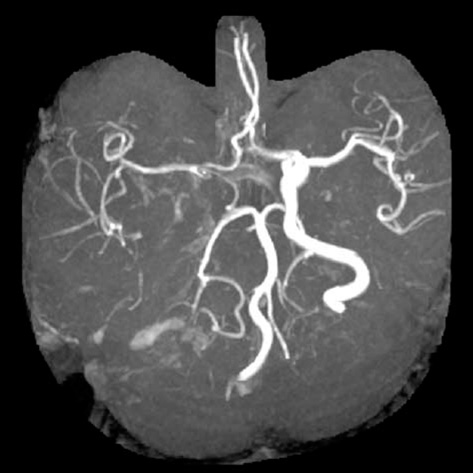J Korean Med Sci.
2009 Oct;24(5):807-811. 10.3346/jkms.2009.24.5.807.
Unilateral Antegrade Selective Cerebral Perfusion in Aortic Surgery: Clinical Outcomes at Different Levels of Hypothermia
- Affiliations
-
- 1Department of Thoracic and Cardiovascular Surgery, Asan Medical Center, University of Ulsan, College of Medicine, Seoul, Korea. hyun227@amc.seoul.kr
- 2Department of Thoracic and Cardiovascular Surgery, Sanggye Baek Medical Center, University of Inje, College of Medicine, Seoul, Korea.
- KMID: 1781998
- DOI: http://doi.org/10.3346/jkms.2009.24.5.807
Abstract
- Although unilateral antegrade selective cerebral perfusion (UASCP) is considered a safe cerebral protection strategy during aortic surgery, an optimum temperature remains to be defined. This study compared outcomes in patients undergoing UASCP at either <24degrees C or > or =24degrees C. Between 2000 and 2007, 104 consecutive patients underwent aortic surgery using UASCP. Patients were divided into two groups according to systemic temperature: group A comprised 64 patients undergoing deep hypothermia (<24degrees C); and group B comprised 40 patients undergoing moderate hypothermia (> or =24degrees C). Both groups were similar in terms of the extent of aortic replacement and mean UASCP time. The total cardiopulmonary bypass time and aortic cross clamp time were longer in group A. Both groups were similar in terms of 30-day mortality rate (9.4% group A, 10.0% group B), and in terms of temporary (6.7% group A, 7.7% group B) and permanent (11.3% group A, 2.6% group B) neurological deficits. Multivariate analysis showed preoperative shock status was a risk factor for in-hospital mortality, and a preoperative history of a cerebral incident was a risk factor for permanent neurological deficit. UASCP under moderate hypothermia is a relatively safe and effective cerebral protective strategy during aortic surgery.
MeSH Terms
-
Aged
Aorta, Thoracic/surgery
Aortic Diseases/mortality/pathology/*surgery
Body Temperature
Cardiopulmonary Bypass/methods
*Cerebrovascular Circulation
Female
Hospital Mortality
Humans
*Hypothermia, Induced
Magnetic Resonance Angiography
Male
Middle Aged
Reperfusion/methods
Risk Factors
Shock/complications
Stroke/complications
Treatment Outcome
Figure
Reference
-
1. Griepp RB, Stinson EB, Hollingsworth JF, Buehler D. Prosthetic replacement of aortic arch. J Thorac Cardiovasc Surg. 1975. 70:1051–1053.2. Ueda Y, Miki S, Kusuhara K, Okita Y, Tahata T, Yamanaka K. Surgical treatment of aneurysms or dissections involving the ascending aorta and aortic arch, utilizing circulatory arrest and retrograde cerebral perfusion. J Cardiovasc Surg (Torino). 1990. 31:553–558.3. Kazui T, Kimura N, Yamada O, Komatsu S. Surgical outcome of aortic arch aneurysms using selective antegrade perfusion. Ann Thorac Surg. 1994. 57:904–911.4. Griepp RB. Cerebral proctection during aortic arch surgery. J Thorac Cardiovasc Surg. 2001. 121:425–427.5. Di Eusanio M, Schepens MA, Morshuis WJ, Dossche KM, Di Bartolomeo R, Pacini D, Pierangeli A, Kazui T, Ohkura K, Washiyama N. Brain protection using antegrade selective cerebral perfusion: a multicenter study. Ann Thorac Surg. 2003. 76:1181–1189.
Article6. Kucuker SA, Ozatik MA, Saritas A, Tasdemir O. Arch repair with unilateral antegrade cerebral perfusion. Eur J Cardiothorac Surg. 2005. 27:638–643.
Article7. Panos A, Murith N, Bednarkiewicz M, Khatchatourov G. Axillary cerebral perfusion for arch surgery in acute type A dissection under moderate hypothermia. Eur J Cardiothorac Surg. 2006. 29:1036–1039.
Article8. DeBakey ME, Crawford ES, Cooley DA, Morris GC Jr. Successful resection of fusiform aneurysm of aortic arch with replacement by homograft. Surg Gynecol Obstet. 1957. 105:657–664.9. Tanaka H, Kazui T, Sato H, Inoue N, Yamada O, Komatsu S. Experimental study on the optimum flow rate and pressure for selective cerebral perfusion. Ann Thorac Surg. 1995. 59:651–657.
Article10. Kazui T, Washiyama N, Muhammad BA, Terada H, Yamashita K, Takinami M, Tamiya Y. Total arch replacement using aortic arch branched grafts with the aid of antegrade selective cerebral perfusion. Ann Thorac Surg. 2000. 70:3–9.
Article11. Spielvogel D, Etz CD, Silovitz D, Lansman SL, Griepp RB. Aortic arch replacement with a trifurcated graft. Ann Thorac Surg. 2007. 83:S791–S795.
Article12. Kazui T. Editorial comment: which is more appropriate as a cerebral method-unilateral or bilateral perfusion? Eur J Cardiotherac Surg. 2006. 29:1039–1040.13. Merkkola P, Tulla H, Ronkainen A, Soppi V, Oksala A, Koivisto T, Hippelainen M. Incomplete circle of Willis and right axillary artery perfusion. Ann Thorac Surg. 2006. 82:74–79.
Article14. Macchi C, Catini C, Federico C, Gulisano M, Pacini P, Cecchi F, Corcos L, Brizzi E. Magnetic resonance angiographic evaluation of circulus arteriosus cerebri (circle of Willis): a morphologic study in 100 human healthy subjects. Ital J Anat Embryol. 1996. 101:115–123.15. McCullough JN, Zhang N, Reich DL, Juvonen TS, Klein JJ, Spielvogel D, Ergin MA, Griepp RB. Cerebral metabolic suppression during hypothermic circulatory arrest in humans. Ann Thorac Surg. 1999. 67:1895–1899.
Article16. Ehrlich MP, McCullough JN, Zhang N, Weisz DJ, Juvonen T, Bodian CA, Griepp RB. Effect of hypothermia on cerebral blood flow and metabolism in the pig. Ann Thorac Surg. 2002. 73:191–197.
Article17. Usui A, Oohara K, Murakami F, Ooshima H, Kawamura M, Murase M. Body temperature influences regional tissue blood flow during retrograde cerebral perfusion. J Thorac Cardiovasc Surg. 1997. 114:440–447.
Article18. Jacobs MJ, de Mol BA, Veldman DJ. Aortic arch and proximal supraaotic arterial repair under continous antegrade cerebral perfusion and moderate hypothermia. Cardiovasc Surg. 2001. 9:396–402.19. Pacini D, Leone A, Di Marco L, Marsilli D, Sobaih F, Turci S, Masieri V, Di Bartolomeo R. Antegrade selective cerebral perfusion in thoracic aorta surgery: safety of moderate hypothermia. Eur J Cardiothorac Surg. 2007. 31:618–622.
Article20. Kazui T, Inoue N, Yamada O, Komatsu S. Selective cerebral perfusion during operation for aneurysms of the aortic arch: a reassessment. Ann Thorac Surg. 1992. 53:109–114.
Article
- Full Text Links
- Actions
-
Cited
- CITED
-
- Close
- Share
- Similar articles
-
- Selective Cerebral Perfusion Through the Right Axillary Artery for Aortic Arch Replacement: A Case Report
- Anesthetic Management during Aortic Arch Surgery Using Anterograde Selective Cerebral Perfusion
- Clinical Results of Ascending Aorta and Aortic Arch Replacement under Moderate Hypothermia with Right Brachial and Femoral Artery Perfusion
- Analysis of Neurological Complications on Antegrade Versus Retrograde Cerebral Perfusion in the Surgical Treatment of Aortic Dissection
- Cerebral Oxygen Saturation Monitoring during Aortic Dissection Surgery: A case report


